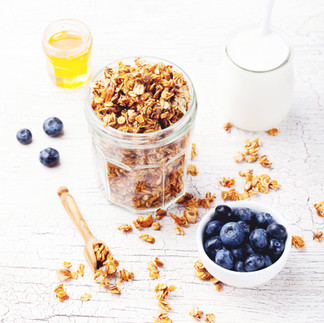Fiber: A Deep Dive Into The Power of Roughage
- Brittany Bennett

- Aug 12, 2023
- 3 min read
Updated: Aug 27, 2023
In the world of nutrition, one term stands out as a cornerstone of good health - fiber. Often overshadowed by macronutrients like proteins, fats, and carbohydrates, fiber plays a crucial role in maintaining a healthy body and preventing a wide array of chronic diseases.
Fiber, often referred to as roughage, is a type of carbohydrate found in plant-based foods that the body cannot digest or absorb. Instead, fiber passes through the digestive system relatively intact. There are two main types of dietary fiber: soluble and insoluble.
Soluble Fiber: Soluble fiber dissolves in water to form a gel-like substance. It can help lower cholesterol levels, regulate blood sugar, and promote a feeling of fullness. Foods rich in soluble fiber include oats, beans, lentils, fruits (such as apples, citrus fruits, and berries), and vegetables like carrots.
Insoluble Fiber: Insoluble fiber does not dissolve in water and adds bulk to stool, aiding in regular bowel movements and preventing constipation. Whole grains (like whole wheat, brown rice, and quinoa), nuts, seeds, and many vegetables (such as broccoli, spinach, and cauliflower) are excellent sources of insoluble fiber.
Since fiber runs it's coarse through the digestive tract relatively intact, it is able provide the body a variety of health benefits no other food component can. Some of the health benefits include:
Digestive Health: Fiber promotes regular bowel movements and prevents constipation by adding bulk to stool. Fiber also supports a healthy gut microbiome and acts as a prebiotic, providing nourishment for beneficial gut bacteria. A healthy gut microbiome is linked to a stronger immune system and improved overall health.
Weight Management: High-fiber foods tend to be more filling, leading to reduced calorie intake. Moreover, fiber slows down digestion and helps regulate blood sugar levels, contributing to better appetite control.
Heart Health: Soluble fiber helps lower LDL ("bad") cholesterol levels, reducing the risk of heart disease. Fiber-rich diets have been associated with a decreased risk of coronary heart disease and stroke.
Blood Sugar Control: Fiber helps regulate blood sugar levels by slowing down the absorption of sugar, which is particularly beneficial for individuals with diabetes.
Colon Health: Adequate fiber intake is associated with a reduced risk of colorectal cancer. Insoluble fiber, in particular, may help prevent diverticular disease and other colon-related issues.
To reap the numerous benefits of fiber, it's essential to include a variety of fiber-rich foods in your diet. Here are some tips to increase your fiber intake (for more tips click here):
Make at least half your grains whole grains and choose whole grain breads, brown rice, and whole wheat pastas
Fill half your plate with fruits and vegetables each meal and incorporate them into snacks
Choose plant based foods that are made with beans, lentils, or chickpeas or add them to soups, salads, and main dishes.
Snack on fresh fruits, nuts, seeds, or trail mixes (watch the sugar) instead of processed foods
Fiber is a nutritional superstar that often goes unnoticed in our diets. Its ability to support digestive health, manage weight, enhance heart health, and reduce the risk of chronic diseases makes it a crucial component of a balanced diet. By incorporating a variety of fiber-rich foods into our meals, we can unlock the incredible benefits that fiber offers, paving the way for a healthier and more vibrant life.
*Pro Tip: If you're new to a high-fiber diet, gradually increase your fiber intake over about 2 weeks to prevent digestive discomfort.
















Comentários